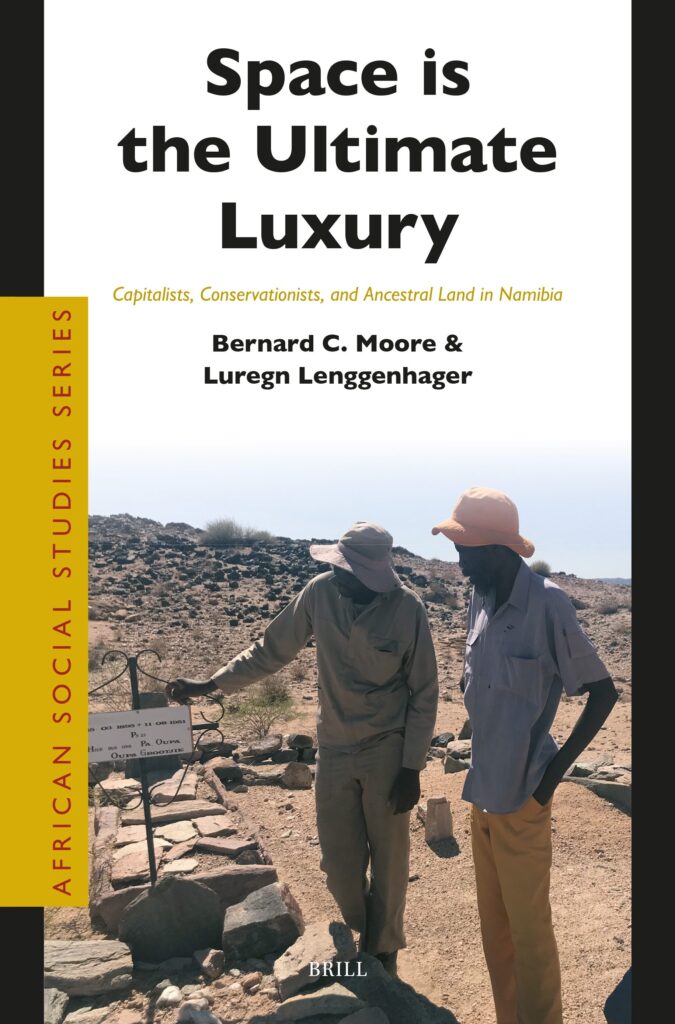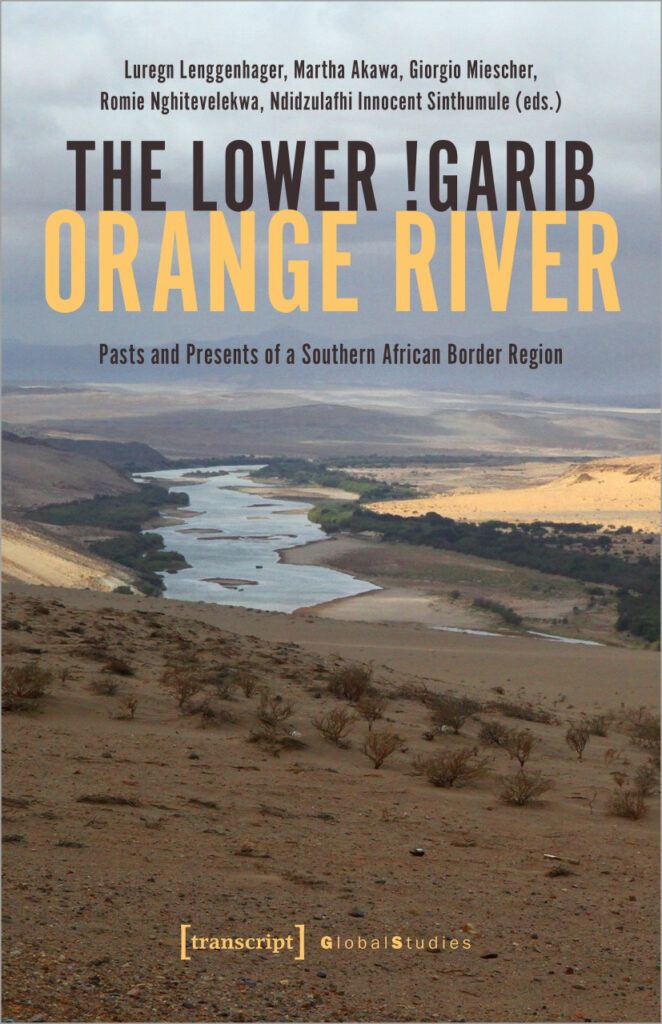Full list of publications can be downloaded here.
Newest publications:
Moore, Bernard C. and Luregn Lenggenhager (2025). Space is the Ultimate Luxury. Capitalists, Conservationists, and Ancesteral Land in Namibia. Leiden: Brill.
Lenggenhager, Luregn, & Mogende, Emmanuel (2024): Nature conservation, borders and violence along the Chobe River between Botswana and Namibia in the twentieth and twenty-first century. Journal of Borderlands Studies, 1–19. https://doi.org/10.1080/08865655.2024.2415024
Lenggenhager, Luregn; Miescher, Giorgio; Nghitevelekwa, Romie; Akawa, Martha (2024): Crossing Etosha: a history of donkeys in Namibia’s central north. Anthropology Southern Africa 47(2), 167–182. https://doi.org/10.1080/23323256.2024.2314774
Lenggenhager, Luregn; Miescher, Giorgio (2024): Dividing, Connecting and Complicating the Hinterland. The Lower Orange River/lGarib. In: Gupta, Pamila; Nuttall, Sarah; Peeren, Esther and Stuit, Hanneke. Planetary Hinterlands: Extraction, Abandonment and Care. Palgrave Macmillan.
Selected publications:

Moore, Bernard C. and Luregn Lenggenhager (2025). Space is the Ultimate Luxury. Capitalists, Conservationists, and Ancesteral Land in Namibia. Leiden: Brill.
This book explores the history, ecology, and society of a seemingly inhospitable stretch of land along the Orange River in southern Namibia. Here, a group of African farmers have succeeded against all odds to stay on their ancestral homeland through decades of colonialism and apartheid. The twenty-first century, however, has brought different people looking to evict them: nature conservationists. These farmers face off against billionaire gemstone mine owners, rhinoceros veterinarians and carbon finance executives, seeking to prove their legal and moral claims to their ancestral lands. This book reveals how we got here and what is at stake if they fail.

Lenggenhager, Luregn; Martha Akawa; Giorgio Miescher; Romie Nghitevelekwa; Ndidzulafhi Innocent Sinthumule (2023). The Lower !Garib / Orange River. Pasts and Presents of a Southern African Border Land. Transcript Verlag. Bielefeld.
The Lower !Garib, or Orange River, flows through the historical Namaqualand and since 1990 has formed the international border between Namibia and South Africa. The contributors to this volume focus on this hardly discussed stretch of the Orange River to understand the region’s social history, geography, and economy. This book brings together scholars from Namibia, South Africa, and overseas, as well as the knowledge and analysis from people living in the region. In concise chapters and short portraits, they discuss the region’s past and present from a variety of perspectives.

Lenggenhager, Luregn; Ramutsindela, Maano (2021). Property killed a peace park dream: the entanglement of property, politics and conservation along the Gariep. Land Use Policy (105). DOI: https://doi.org/10.1016/j.landusepol.2021.105392
The article draws on empirical evidence from the failed attempt to create two transfrontier conservation areas across the Namibia-South Africa border, the Gariep Transfrontier Park in the late 1990s and the Lower Orange River Transfrontier Conservation Area in 2008.
Evidence from the National Archives of South Africa and Namibia, as well from interviews with involved people in the region, showed that the reason for this failure can be found in the particular historical and recent configuration of land rights in the region. Based on these findings, we argue that establishing transfrontier conservation areas needs negotiations with land rights holders and the consequent rearrangement of land use options. Many examples of successfully implemented Transfrontier Conservation Areas TFCA show that this is much easier on communal land, while negotiations are much harder with private (mostly white) landowners. Our case study contributes to understandings of conditions under which the idea of TFCA materializes or fails and underscores the agency of property regimes in nature conservation.

Luregn Lenggenhager (2018). Ruling Nature, Controlling People. Nature Conservation, Development and War in North-Eastern Namibia since the 1920s. Basel: Basler Afrika Bibliographien.
The monograph resulting from my doctoral thesis demonstrates the symbiotic connection between nature conservation, security and warfare. I examined how the South African military and the civil administration of a so-called Homeland during Apartheid worked together and mutually influenced each other. I demonstrated how resulting networks, technologies and spatial organization are still immanent in more recent conservation initiatives in the region and beyond.
The book was reviewed in several relevant journals (e.g. a review forum in JSAS and reviews in ASA; hsozkult; JAR) and was appreciated for its contribution to ongoing debates in the fields of political ecology, environmental history and critical conservation studies. Further, the book provides a useful administrative and socio-economic history of North-Eastern Namibia.

Lenggenhager, Luregn (2015). Nature, War and Development: South Africa’s Caprivi Strip, 1960-1980. Journal of Southern African Studies, 41(3): 467-483.
For this publication I used data from my PhD project to engage with the history of South Africa’s occupation of a particular area in North-Eastern Namibia during the height of Apartheid, the liberation war in Namibia and the civil war in Angola. It shows the entanglement of this allegedly remote area within larger networks of the cold war and South Africa’s imperial power in the region.
As such it contributes to a better understanding of the centers of power of the Apartheid regime by looking at it from the ‘margins’. I published the paper in a special issue on the South African Empire – a project that successfully put a new historiographical focus on South Africa’s role within Southern Africa.